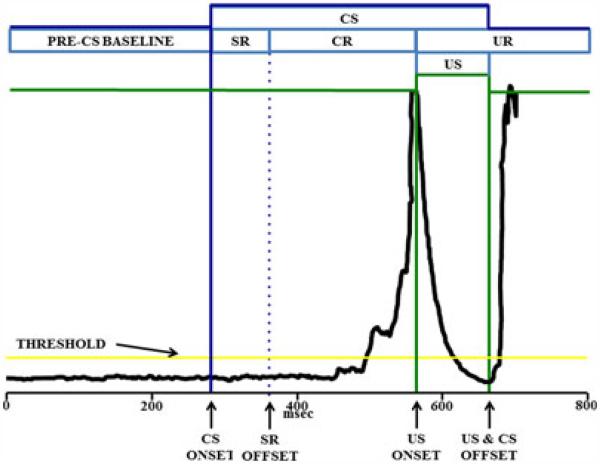Fig. 1.
Illustration of short-delay eyeblink conditioning procedures and trial performance electromyographic (EMG) tracing examples. The dark line shows the integrated EMG output for the trial epoch; the vertical lines designate onset and offset of stimulus events over the trial epoch. Each trial begins with a 280-ms pre-conditioned stimulus (CS) baseline period, from which the threshold is established at 0.4 standard deviations above mean value of the baseline EMG. EMG responses that surpass threshold are counted as a blink. The tone CS onset is represented by the first vertical bold line, and the 80 ms interval that follows is the startle response (SR) period; blinks during the SR period are considered startle responses to the tone and serve as a measure of sensory reactivity to the tone. Blinks occurring after the end of the SR period (after the first vertical dotted line) are considered conditioned responses (CRs) to the tone in anticipation of the unconditioned stimulus (US). The CR period is the interval between the end of the SR period and the US. The delivery of the electrical stimulation US interferes with the recording of the EMG activity, so the EMG signal is bypassed (i.e., shunted to a value of 0) during the delivery of the US. The EMG tracing shown here for paired short-delay trial is from an animal toward the end of its training, illustrating a well-timed CR.

